Evaluation of Subsidy Programmes
This research group focuses on two main research questions: (i) What is the causal effect of cooperative innovation activities on the performance of firms and regions? (ii) What are the causal effects of public Research and Development (R&D) support schemes on the performance of firms and regions? The first research question concerns the dynamics of firms and regions as a result of their different innovation activities. We apply a micro-based integrative perspective on innovative activities which allows identifying causal effects of cooperative activities on specific outcomes (e. g., patent applications, scientific publications, employment growth, or productivity growth). Concerning the second research question, recent studies mainly focus on the evaluation of one specific subsidy scheme. Research in this group aims to overcome this shortcoming by considering various support schemes. Indicators for the firms’ success are (amongst others) patent applications and employment growth. The results allow insights for the future design of innovation support schemes.
Centre for Evidence-based Policy Advice (IWH-CEP)
Research Cluster
Economic Dynamics and StabilityYour contact

Mitglied - Department Präsidialbereich
EXTERNAL FUNDING
09.2019 ‐ 09.2022
Establishing Evidence-based Evaluation Methods for Subsidy Programmes in Germany (EVA-KULT)
European Regional Development Fund (ERDF)
The project aims at expanding the Centre for Evidence-based Policy Advice at the Halle Institute for Economic Research (IWH-CEP).
01.2018 ‐ 12.2020
Networked growth - Innovative Saxony-Anhalt through digital business models (Competence Center 4.0)
Federal Ministry for Economic Affairs and Energy (BMWI)
01.2017 ‐ 12.2018
Political Participation in Eastern Germany
Federal Ministry for Economic Affairs and Energy (BMWI)
12.2015 ‐ 11.2018
Socio-economic Effects of Research on Innovative Approaches for POC Diagnostics
Federal Ministry of Education and Research (BMBF)
Part of the EXASENS project. Coordinated by the Leibniz Institute of Photonic Technology (IPHT) in Jena, nine Leibniz institutes are working together on researching point-of-care (POC) technology for the prediction and diagnosis of chronic inflammatory respiratory diseases. See press release.
02.2017 ‐ 02.2018
The Importance of Non-University Research Institutions for the Development of Firms and Regions (Be_For_Reg-Projekt)
Federal Ministry of Education and Research (BMBF)
01.2015 ‐ 12.2016
Evaluation of the "Joint Task 'Improving the Regional Economic Structure'" in the Federal State of Saxony-Anhalt
Investitionsbank Sachsen-Anhalt
Refereed Publications
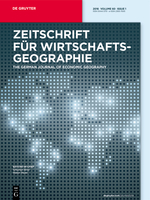
Drivers of the Spatial Emergence and Clustering of the Photovoltaic Industry in Germany
in: Zeitschrift für Wirtschaftsgeographie, No. 3, 2015
Abstract
The drivers of the spatial emergence and clustering of the photovoltaic industry in Germany. Following the relatedness literature, we explore to what extent related industries influenced the regional emergence of the photovoltaic (PV) industry. In addition, we shed light on factors explaining selective processes of clustering. We particularly argue that generic resources and resources of related activities have been crucial for the regional concentration in early phases of the industry life cycle. With increasing maturity, industry-specific resources became more important. Based on a unique dataset containing population dynamics of the German PV industry, the hypotheses are tested empirically. Our results partially confirm the assumed beneficial effects of related industries for the emergence of the PV industry. Moreover, we observe changes in the relative importance of factors supporting regional concentration, with industry-specific resources becoming dominant as the industry matures.
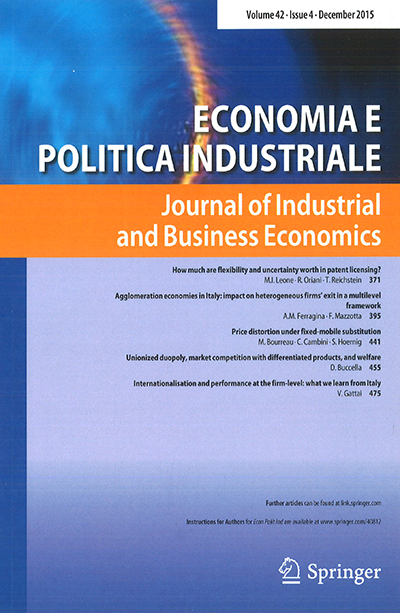
Determinants of Knowledge Exchange Between Foreign and Domestic Enterprises in European Post-transition Economies
in: Journal Economia e Politica Industriale (Journal of Industrial and Business Economics), No. 4, 2014
Abstract
The aim of this paper is to contribute to the literature on internationalised research and development by investigating determinants of knowledge and technology transfer between foreign subsidiaries and the local economy in European post-transition economies. This inquiry leads to a better understanding of determinants that influence this knowledge and technology exchange. Applying a logit model, we find that, in particular, the foreign subsidiary’s corporate governance structure, its embeddedness in the multinational enterprise’s internal knowledge base, its own technological capacity, the growth of the regional knowledge stock and the regional sectoral diversification are all positively associated with the transfer of knowledge. Subsidiaries’ investment motives and the relative weight of the sector of investment in the region’s economy appear to be of less importance. The analysis focuses on European post-transition economies, using the example of five selected Central Eastern European countries and East Germany. We exploit a unique dataset, the IWH FDI Micro database, which contains information on one thousand two hundred forty-five foreign subsidiaries in this region.
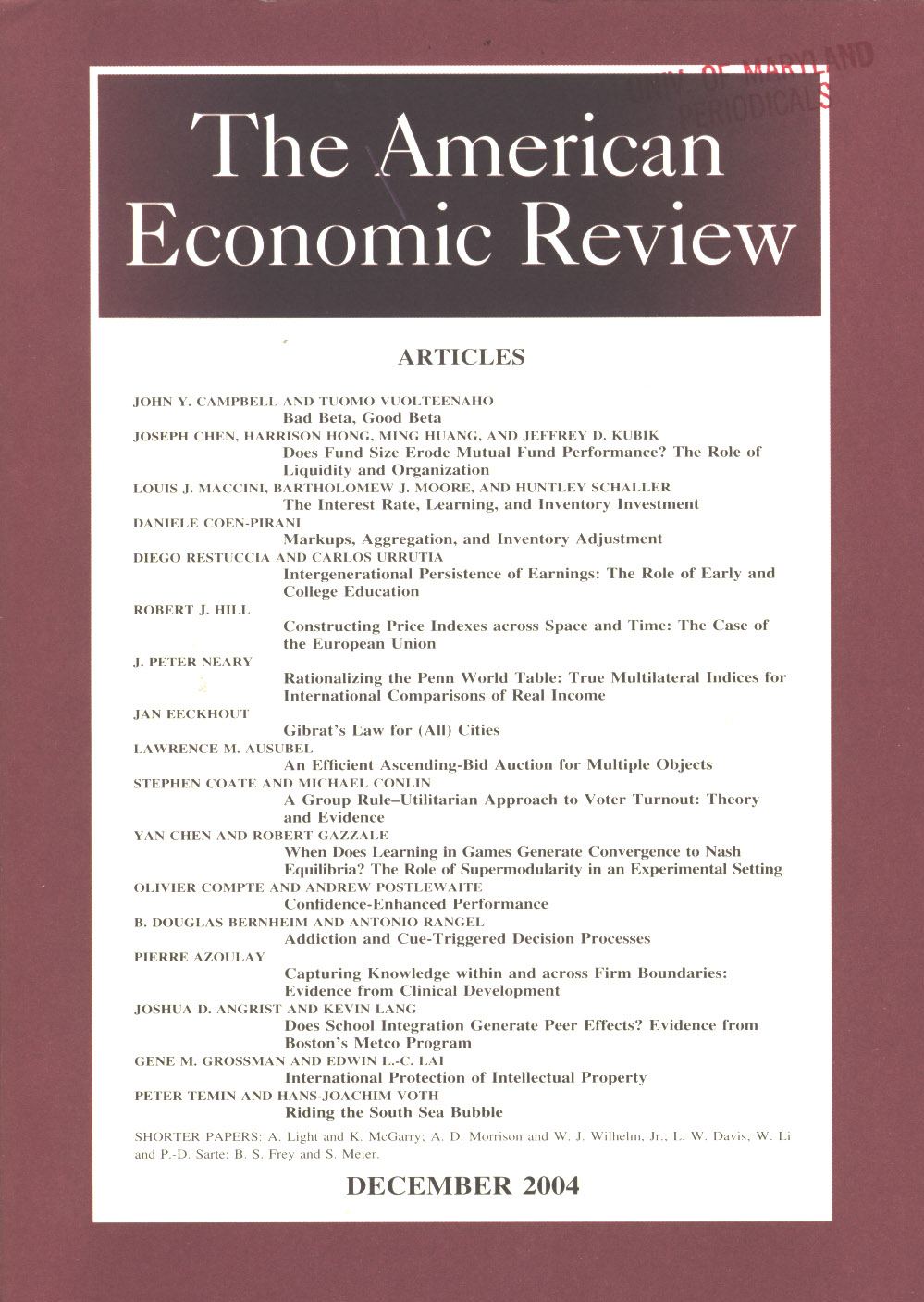
A Community College Instructor Like Me: Race and Ethnicity Interactions in the Classroom
in: American Economic Review, No. 8, 2014
Abstract
Administrative data from a large and diverse community college are used to examine if underrepresented minority students benefit from taking courses with underrepresented minority instructors. To identify racial interactions we estimate models that include both student and classroom fixed effects and focus on students with limited choice in courses. We find that the performance gap in terms of class dropout rates and grade performance between white and underrepresented minority students falls by 20 to 50 percent when taught by an underrepresented minority instructor. We also find these interactions affect longer term outcomes such as subsequent course selection, retention, and degree completion.
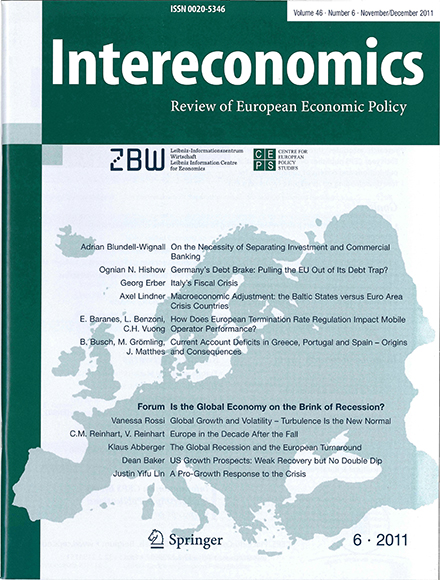
The Skills Balance in Germany’s Import Intensity of Exports: An Input-Output Analysis
in: Intereconomics, No. 2, 2014
Abstract
In the decade prior to the economic and financial crisis, Germany’s net exports increased in absolute terms as well as relative to the growing level of import intensity of domestically produced export goods and services. This article analyses the direct and indirect employment effects induced both by exports as well as by of the import intensity of the production process of export goods and services on the skills used. It shows that Germany’s export surpluses led to positive net employment effects. Although the volume of imports of intermediate goods increased and was augmented by the rise in exports, it could not undermine the overall positive employment effect.
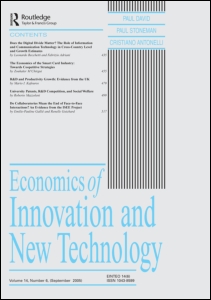
R&D Cooperation for Non-technological Innovations
in: Economics of Innovation and New Technology, No. 7, 2014
Abstract
Past research on the impact of R&D cooperation on firm innovation performance has almost solely focused on technological innovations. This paper investigates the impact of R&D cooperation on non-technological innovation performance of firms. In doing so, seven different cooperation partner types are distinguished. Survey data from German firms are used for the econometric analysis. It is shown that R&D cooperation increases the probability of a firm to introduce non-technological innovations. R&D cooperation with suppliers, consultants, other firms within the same firm group and universities has a significant positive impact on organizational and marketing innovation performance. Cooperation with governmental research institutes and competitors has no significant effect. R&D cooperation with customers has a significant impact on a firm's organizational innovation performance, but not on marketing innovation performance.
Working Papers
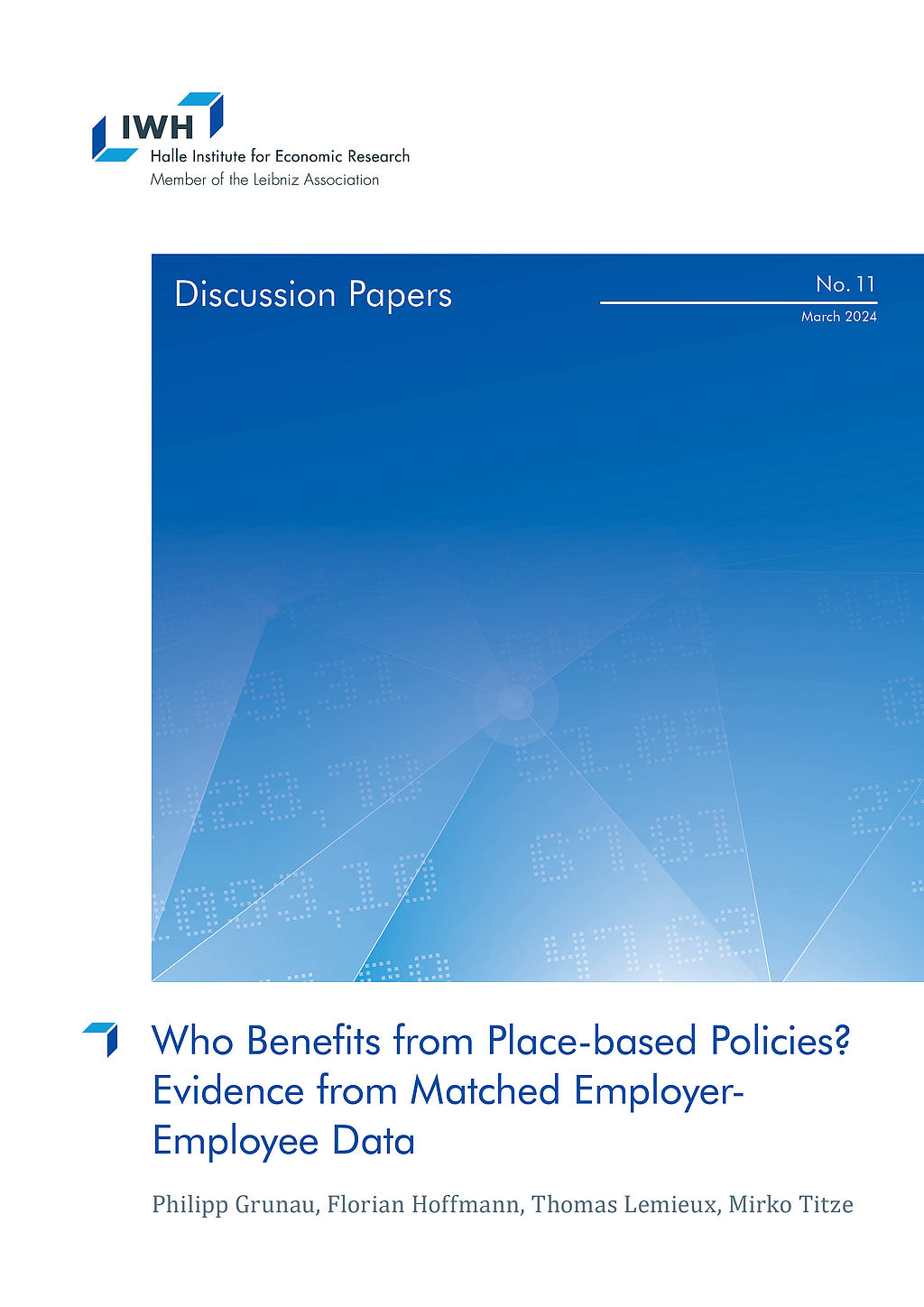
Who Benefits from Place-based Policies? Evidence from Matched Employer-Employee Data
in: IWH Discussion Papers, No. 11, 2024
Abstract
We study the wage and employment effects of a German place-based policy using a research design that exploits conditionally exogenous EU-wide rules governing the program parameters at the regional level. The place-based program subsidizes investments to create jobs with a subsidy rate that varies across labor market regions. The analysis uses matched data on the universe of establishments and their employees, establishment-level panel data on program participation, and regional scores that generate spatial discontinuities in program eligibility and generosity. These rich data enable us to study the incidence of the place-based program on different groups of individuals. We find that the program helps establishments create jobs that disproportionately benefit younger and less-educated workers. Funded establishments increase their wages but, unlike employment, wage gains do not persist in the long run. Employment effects estimated at the local area level are slightly larger than establishment-level estimates, suggesting limited spillover effects. Using subsidy rates as an instrumental variable for actual subsidies indicates that it costs approximately EUR 25,000 to create a new job in the economically disadvantaged areas targeted by the program.
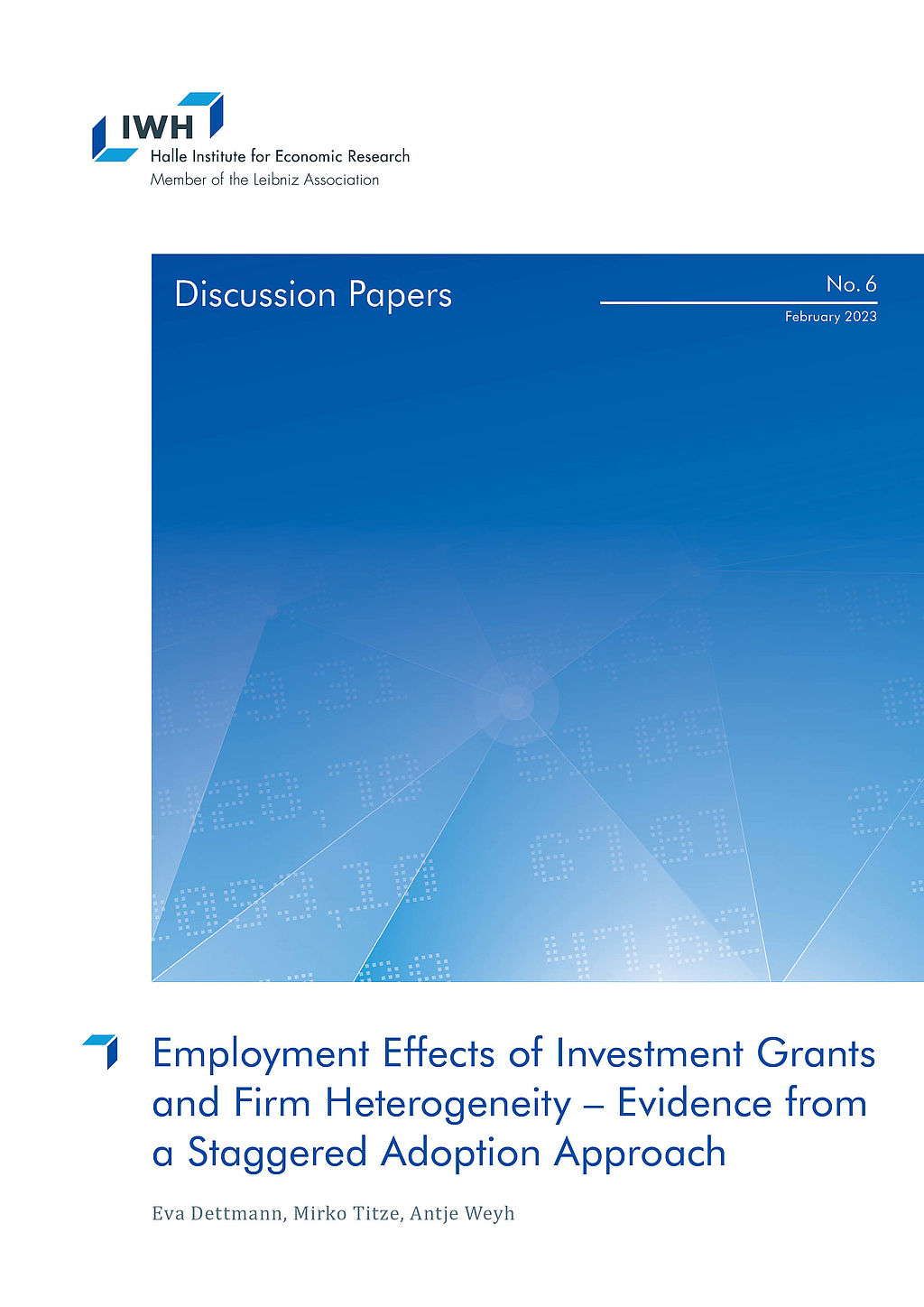
Employment Effects of Investment Grants and Firm Heterogeneity – Evidence from a Staggered Adoption Approach
in: IWH Discussion Papers, No. 6, 2023
Abstract
This study estimates the establishment-level employment effects of investment grants in Germany. In addition to the average treatment effect for the treated, we focus on discrimination in the funding rules as potential source of effect heterogeneity. We combine the difference-in-differences approach of Callaway and Sant’Anna (2021) that explicitly models variation in treatment timing with a ties matching at the cohort level. We observe a positive effect of investment grants on employment development in the full sample. The subsample analysis yields strong evidence for effect heterogeneity due to firm characteristics and the economic environment.
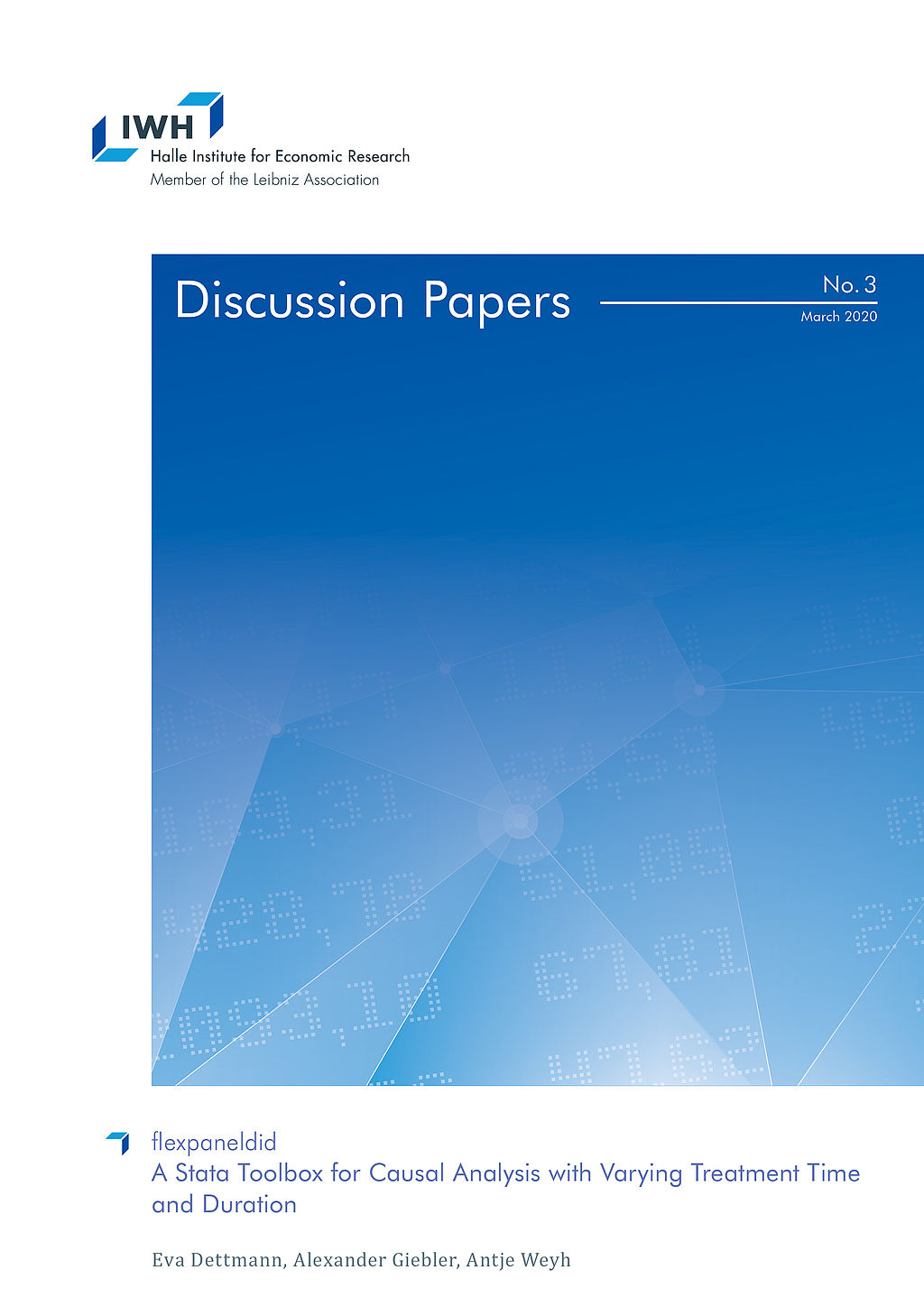
flexpaneldid: A Stata Toolbox for Causal Analysis with Varying Treatment Time and Duration
in: IWH Discussion Papers, No. 3, 2020
Abstract
The paper presents a modification of the matching and difference-in-differences approach of Heckman et al. (1998) for the staggered treatment adoption design and a Stata tool that implements the approach. This flexible conditional difference-in-differences approach is particularly useful for causal analysis of treatments with varying start dates and varying treatment durations. Introducing more flexibility enables the user to consider individual treatment periods for the treated observations and thus circumventing problems arising in canonical difference-in-differences approaches. The open-source flexpaneldid toolbox for Stata implements the developed approach and allows comprehensive robustness checks and quality tests. The core of the paper gives comprehensive examples to explain the use of the commands and its options on the basis of a publicly accessible data set.
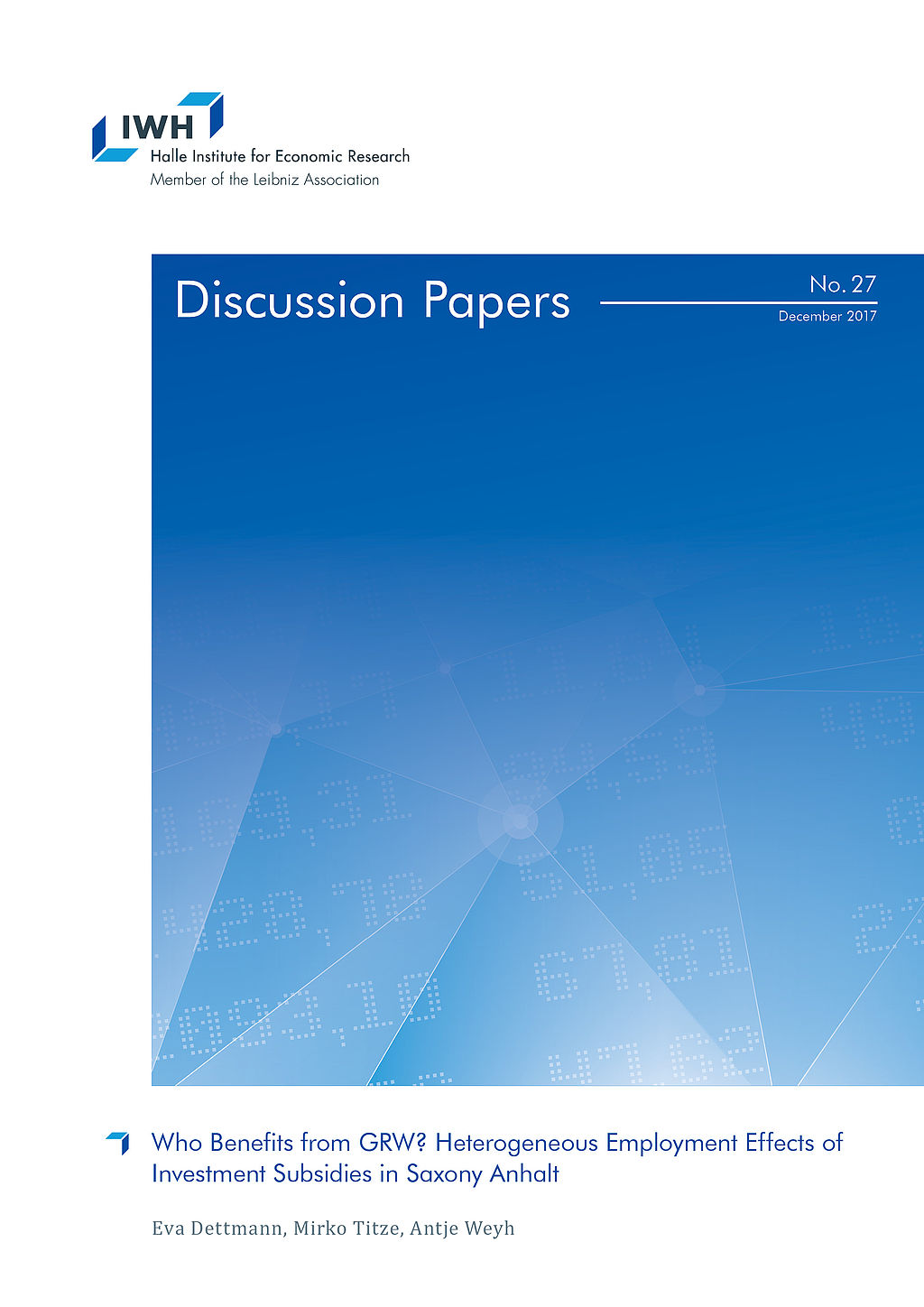
Who Benefits from GRW? Heterogeneous Employment Effects of Investment Subsidies in Saxony Anhalt
in: IWH Discussion Papers, No. 27, 2017
Abstract
The paper estimates the plant level employment effects of investment subsidies in one of the most strongly subsidized German Federal States. We analyze the treated plants as a whole, as well as the influence of heterogeneity in plant characteristics and the economic environment. Modifying the standard matching and difference-in-difference approach, we develop a new procedure that is particularly useful for the evaluation of funding programs with individual treatment phases within the funding period. Our data base combines treatment, employment and regional information from different sources. So, we can relate the absolute effects to the amount of the subsidy paid. The results suggest that investment subsidies have a positive influence on the employment development in absolute and standardized figures – with considerable effect heterogeneity.
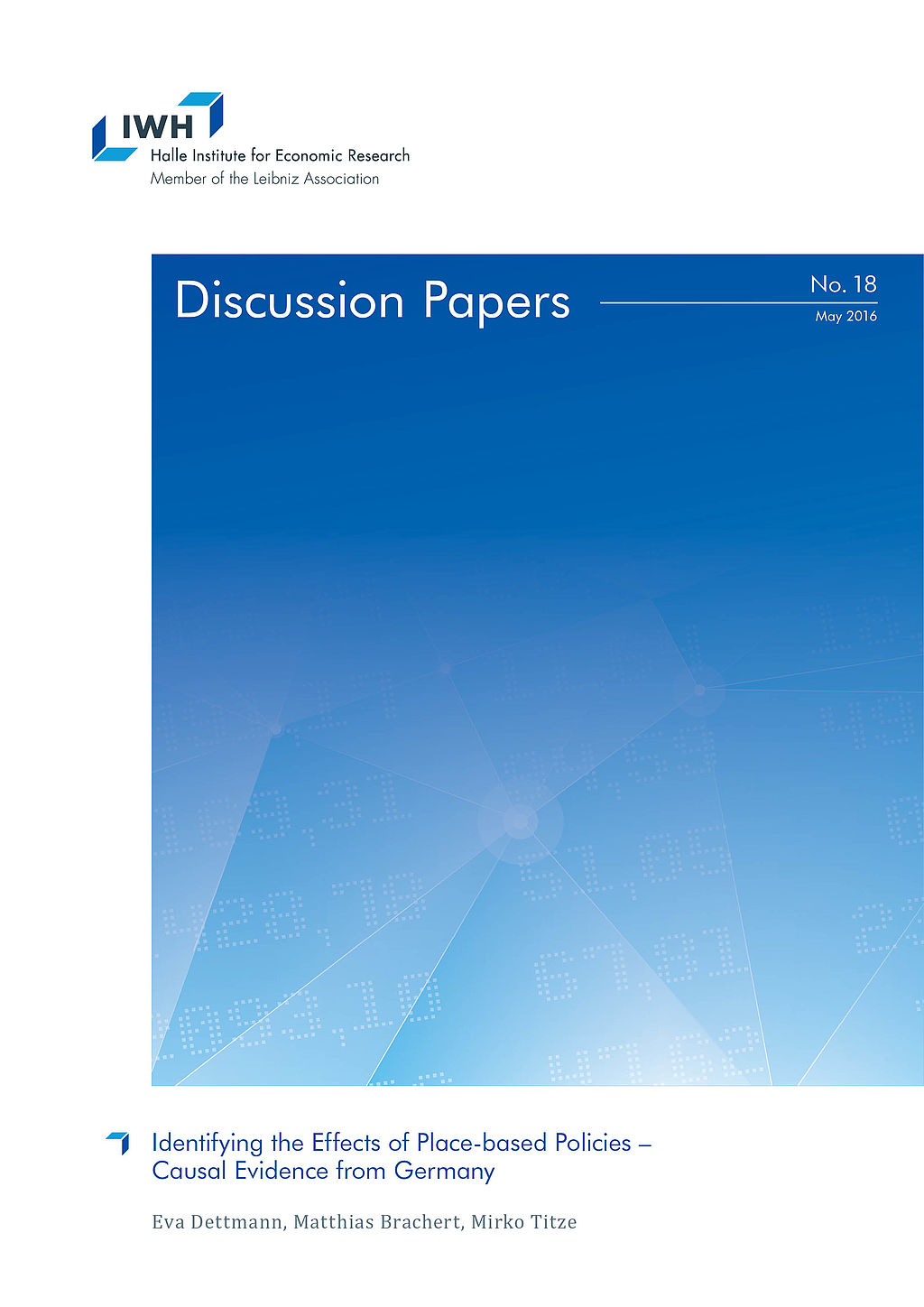
Identifying the Effects of Place-based Policies – Causal Evidence from Germany
in: IWH Discussion Papers, No. 18, 2016
Abstract
The German government provides discretionary investment grants to structurally weak regions to reduce regional disparities. We use a regression discontinuity design that exploits an exogenous discrete jump in the probability of receiving investment grants to identify the causal effects of the investment grant on regional outcomes. We find positive effects for regional gross value-added and productivity growth, but no effects for employment and gross wage growth.














